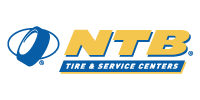
SHOP for TIRES
Basic Vehicle Maintenance for Teen Drivers

Every parent gets nervous when their teenage child receives a driver's license. When the keys are handed over, you are not only giving over the freedom of driving, but the responsibility of a car and the safety of others. That fear and worrying never fade, but one way to ease the transition is by making sure your teen knows how to perform basic maintenance on his or her car.
Below are six basic vehicle maintenance tasks every teen driver should know:
Know What Warning Lights Mean
When a teenager first begins to drive, they may be oblivious or confused about the different warning lights on a car's dashboard. These lights are informative for things such as low gas, oil change needed, or check engine. Have the teen driver read the car's owner's manual to ensure they understand the meanings of each warning light.
Checking Oil Levels and Changing the Engine Oil
An important maintenance task that all drivers should do is check and change their car's oil. Oil keeps an engine running and working in the best condition possible. Unchanged oil can cause a buildup of dirt and other minerals. Over time, this can then lead to the engine wearing out or failing.
- Steps for checking the oil:
- Always check the gauges on the dashboard.
- If arrow is flickering, this could mean that the oil level is low.
- Pop the hood of the car.
- Search for the oil stick.
- Pull the stick out with a paper towel.
- At the end of the stick, there should be a line with an F by it.
- If the oil is near the Full line, then the oil does not need to be changed.
- If there is only a small amount of oil on the bottom of the stick, it is time to get an oil change.
- Professional oil changing services are quick and inexpensive.
Care for Tires
One of the biggest problems with tires is trying to keep them properly inflated at all times. Overinflated or underinflated tires can cause unnecessary damage. When this happens, it can cause tires to wear out unevenly, which will require more frequent replacement. Properly inflated tires can improve gas mileage.
Teen drivers should be aware of the consequences of improperly inflated tires. They can check their tires whenever they are getting into the car or are filling up their gas tanks. The majority of gas stations have free tire air pumps that are easy to use.
All tires have the minimum and maximum pressures listed on the sides. If you are concerned a tire is low, use a tire pressure gauge to check. Remember always to check tire pressure throughout the year, especially when seasons begin to change.
Changing a Flat Tire
It is crucial for all drivers to know how to change a flat tire. Always make sure the car is stocked with a spare tire, jack, and a lug wrench. The majority of cars come with these tools.
General steps for changing a tire:
- Pull over to a safe spot.
- Put hazard lights on.
- Take the wrench and loosen the lug nuts.
- Use the jack to lift the vehicle off the ground.
- Remove the lug nuts and pull the tire off.
- Place the spare tire on the car.
- Put the lug nuts back on with the wrench.
- Use the jack to lower the car back down to the ground.
- Make sure all lug nuts are tightened.
- Put all tools and flat tire back into the trunk.
Checking the Coolant
Along with the oil, the coolant is also critical to the car engine. It prevents the engine from overheating. When a car starts overheating, it can stop working. Checking the coolant every month is an easy and beneficial task to learn.
To do this, pop open the hood and show your teenage driver where the coolant is located in the vehicle. Coolant is stored in a clear plastic container that has fill lines on it to make it easy to read. Make sure the levels are above the minimum and below the maximum listed on the containers.
Cleaning a Car
By regularly cleaning a car, whether it is by hand or through a car wash, it allows the car to last longer and stay safer. A dirty windshield or car lights can cause serious accidents due to lack of visibility. When weather conditions are bad, such as rain, snow, fog or even nightfall, a dirty windshield will make it even harder to see.
Summary
Parents are a huge part of teaching their teenagers how to drive in a safe and smart manner. The driving skills are an important step toward a teen's freedom. However, to ensure that they are safe at all times, it is important to teach them the basic car maintenance tasks they can perform.
